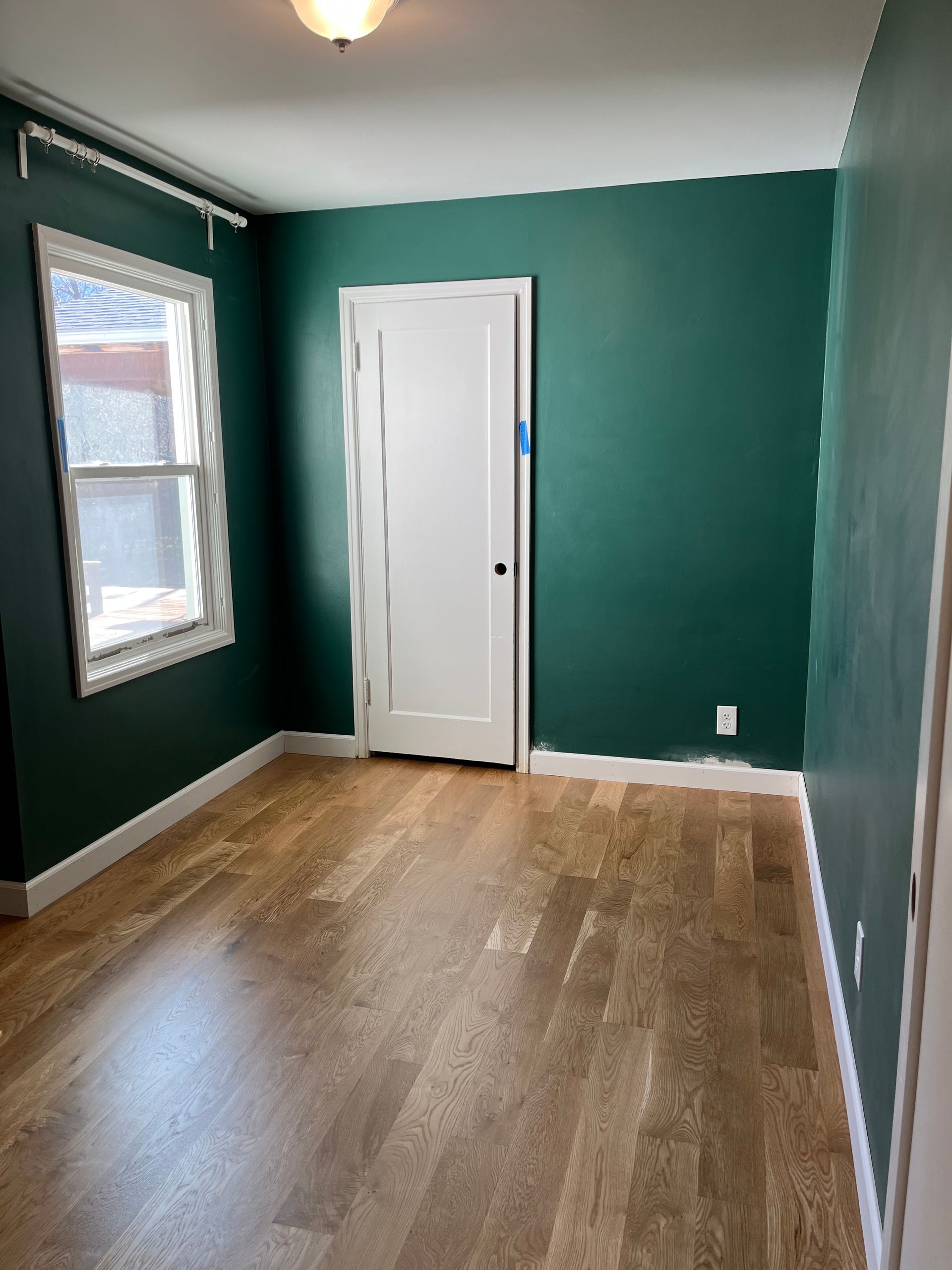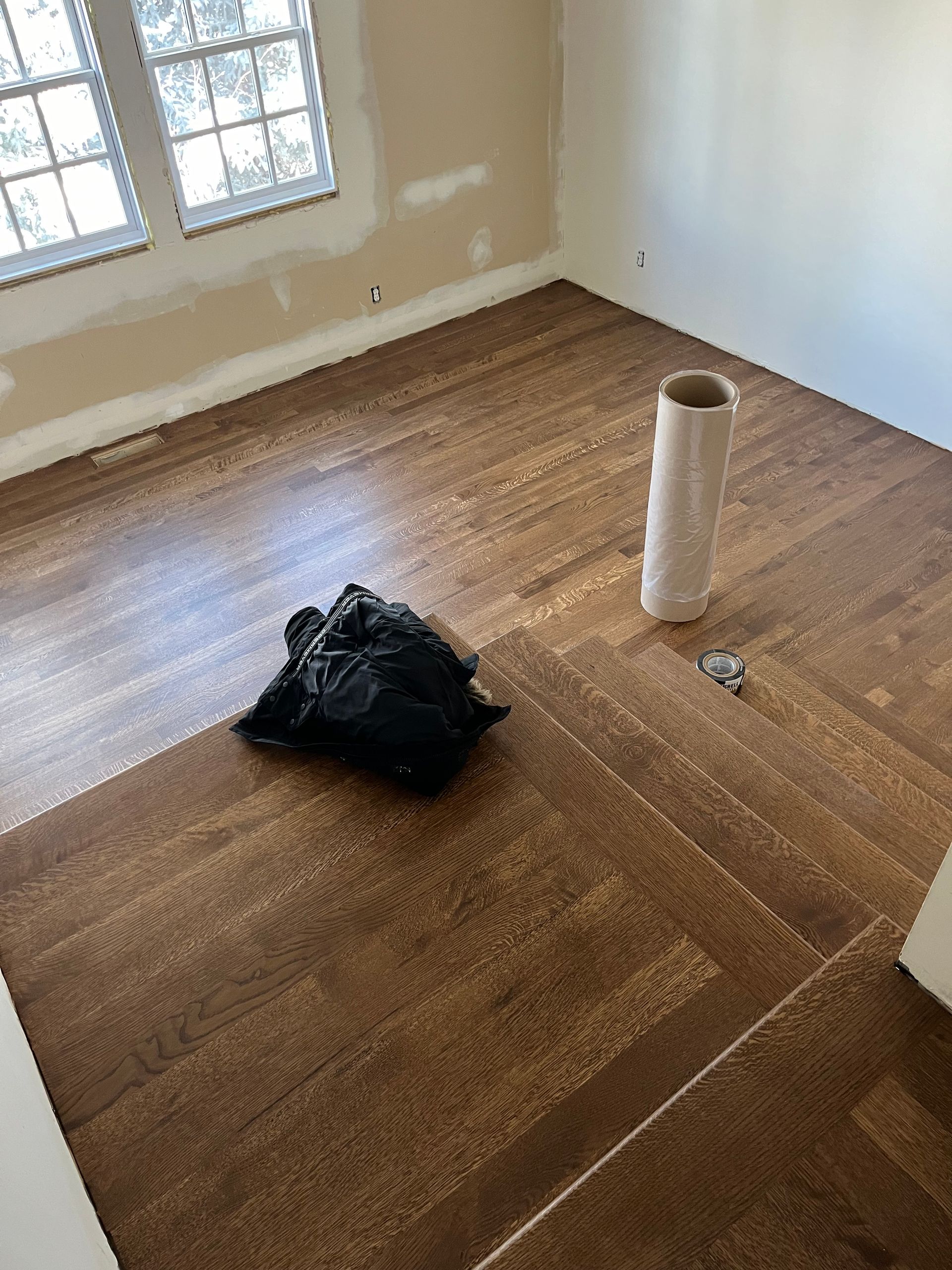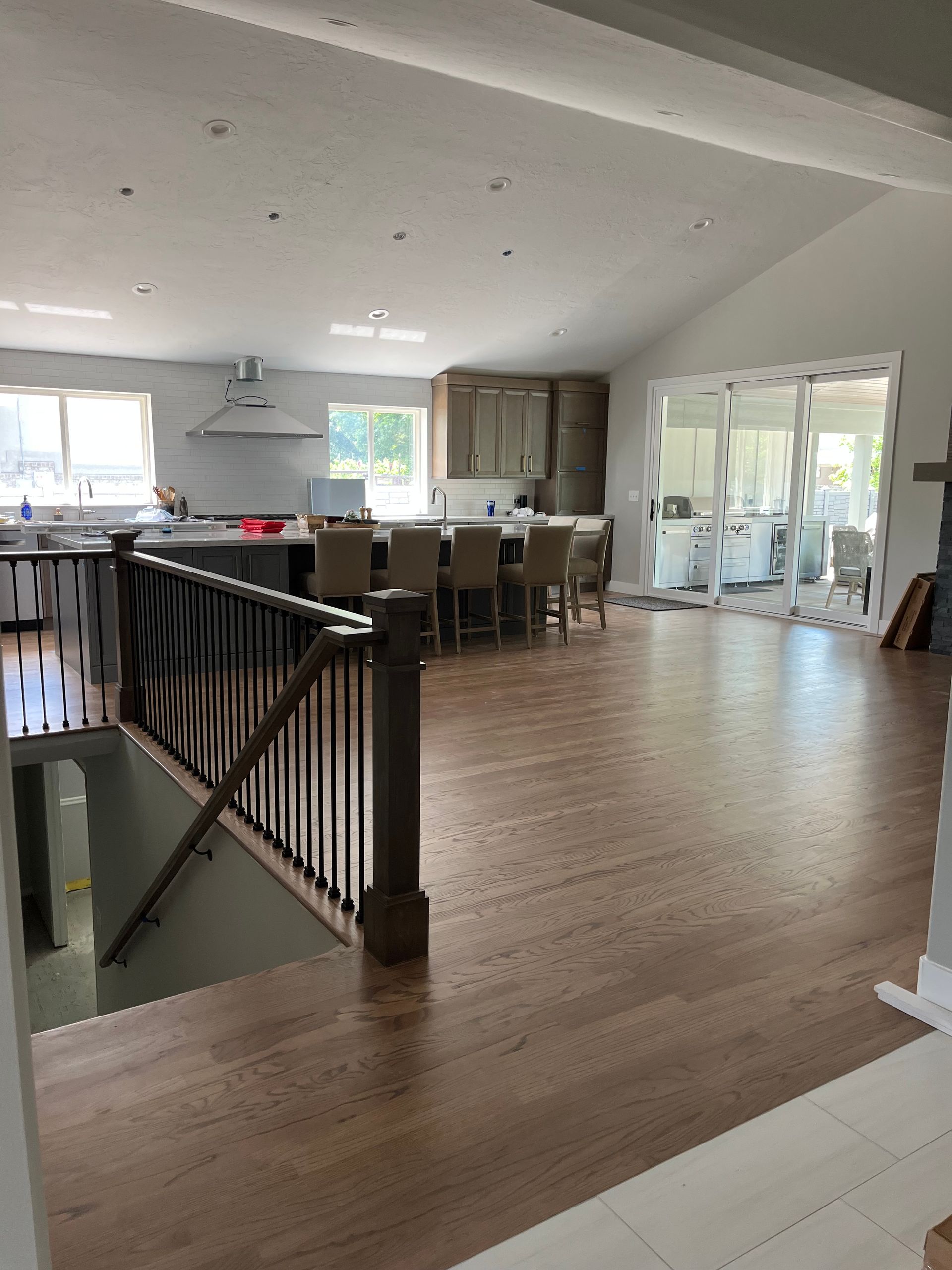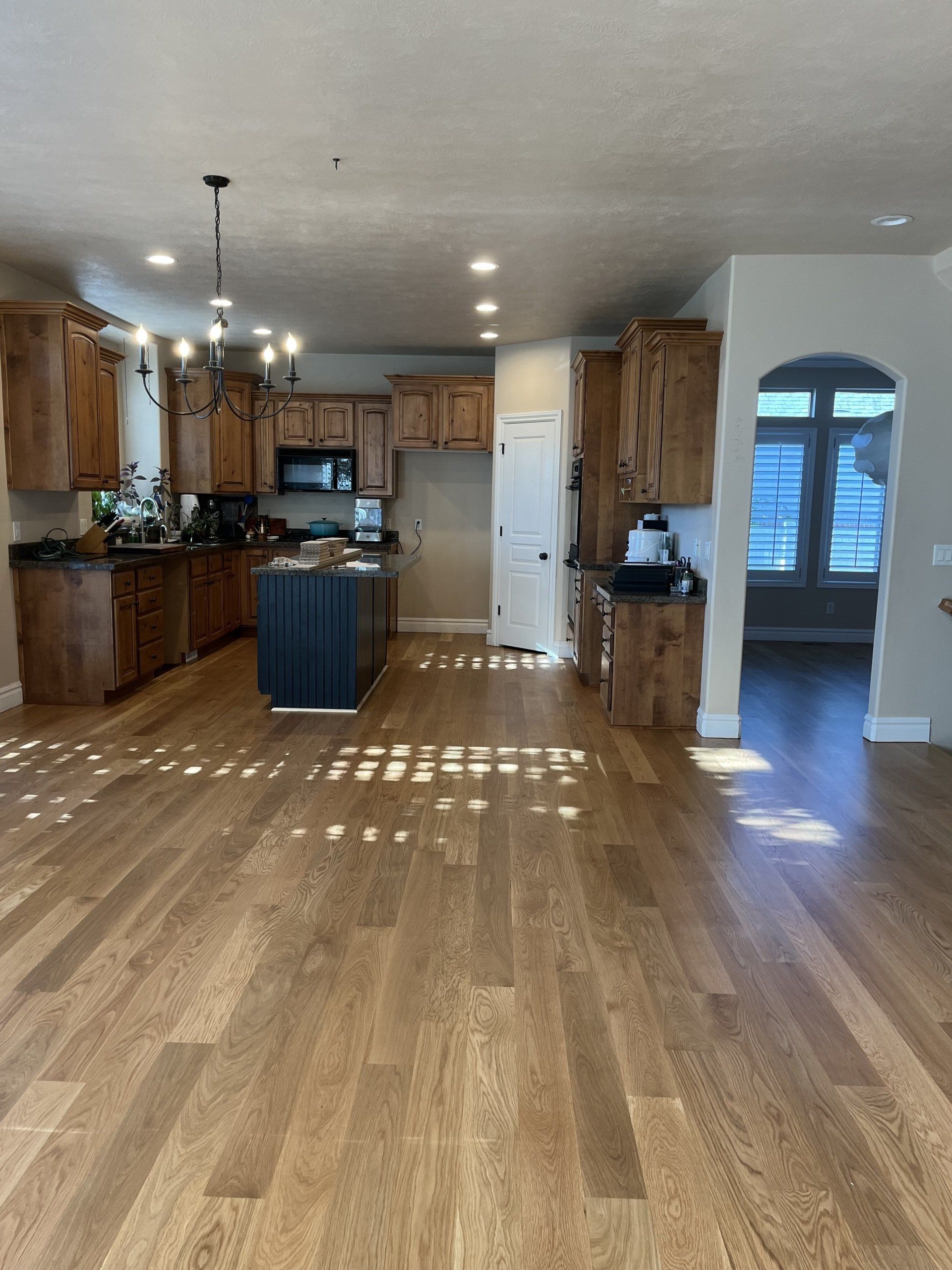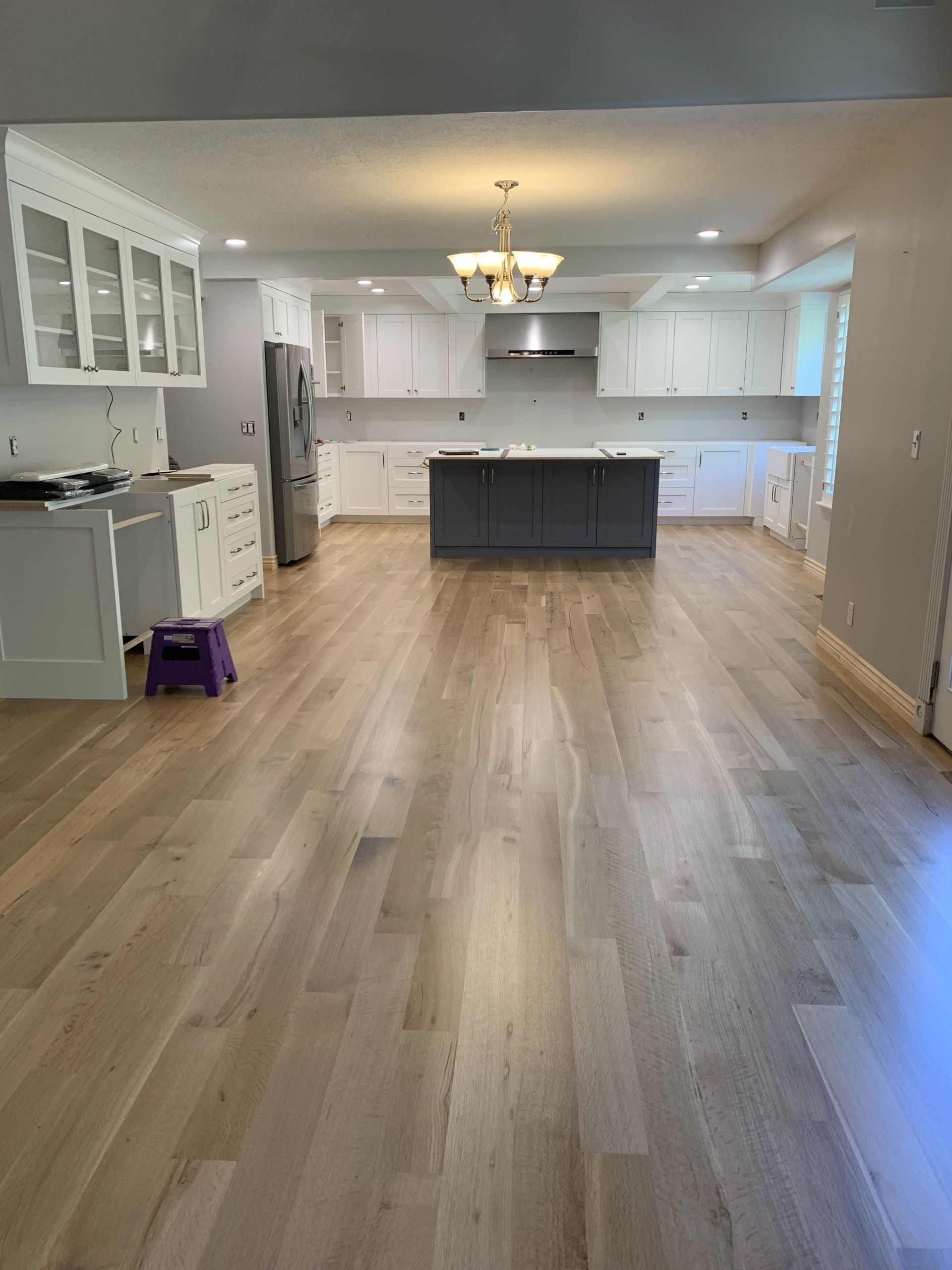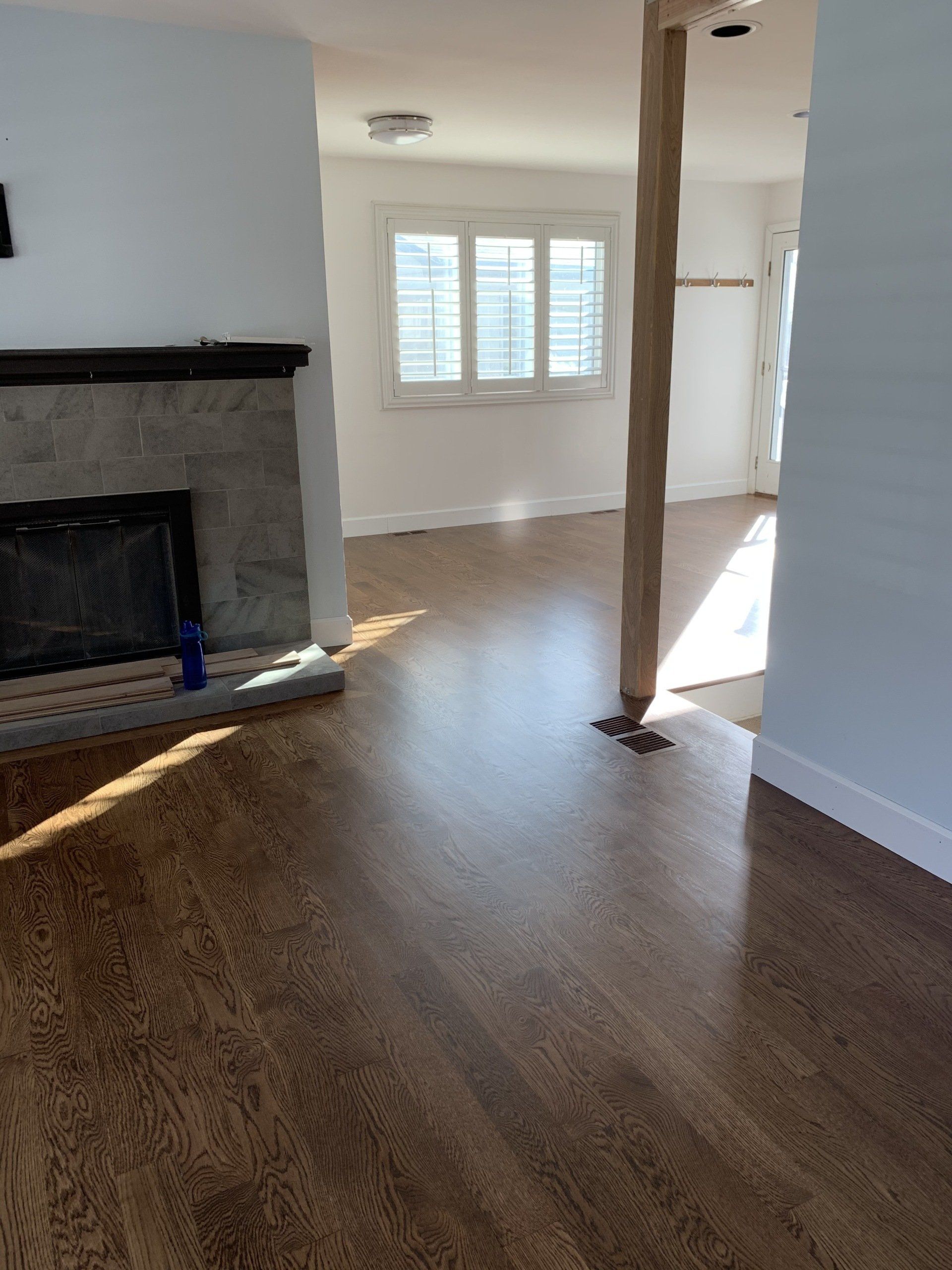CLEANING YOUR HARDWOOD FLOORS
Cleaning your hardwood floors with the proper tools and products is essential for both the short-term and long-term protection and maintenance of your hardwood floors. It is important to know what type of finish is on your hardwood floors. This article is going to focus on floors finished with polyurethane, water-based finishes, acid finishes, and pre-finished with aluminum oxide and polyurethane. Floors finished with products such as Woca Oil or NuOil have specialized cleaning products and instructions.
REMOVE THE DIRT AND DEBRIS
One of the most important steps you can take to prevent surface scratches is to remove the dirt and debris from the floor. I recommend vacuuming the floors with a soft bristle brush over sweeping with a broom, Swiffer dry cloth, or microfiber, which may sufficiently collect the debris, but then scratch the floor as the debris is dragged across the floor as you continue sweeping. I always tell my clients not to make the same mistake I made one day: I was in a rush and decided to vacuum my floors using the hard floor setting on the vacuum instead of the hardwood floor attachment I usually used. Yes, the hard floor setting stops the beater brush from rotating (the bristles on the beater brush are very stiff and meant to loosen dirt within carpet), but the plastic wheels on the vacuum scratched my floor from the back-and-forth motion! I have heard from my clients that the Dyson Ball and Roomba vacuums do well on hardwood floors, but I have not tested them myself.
CLEANING
Once the dirt and debris have been removed, I recommend cleaning the floors with Bona Hardwood Floor Cleaner. I recommend Bona because it is readily available, although Woodwise is another great cleaner. These products have a slight disinfecting quality, but will not strip, dull or leave a waxy residue. These products also have an evaporation element in them, so the liquid is not "sitting" on your floor. This is a very simple spray and wipe with a microfiber towel. A microfiber if fine to use at this point in the cleaning process because the dirt particles have already been removed by the vacuum.
BUYER BEWARE!
Please be careful not to pick-up the Bona Polisher! The Polisher is meant to be a recoat product. Unfortunately, I have seen many homeowners try to "refresh" their floors with the Polisher, and not knowing how to properly apply this product have left puddles of Polisher on their floor (which dry and cannot be easily removed) or have accidentally picked up the Polisher and have completely changed the sheen of their floors just by "cleaning" them.
WHAT NOT TO USE
Just as important as what to clean your hardwood floors with, I want to review what not to use. Let me just say that because you read something on the internet or see it on TV, does not mean that is is good to use on your wood floors! First, no water mopping or steam cleaners. Water warps wood. This is not to say that you can't take a damp (not wet) cloth to pick up a small spill; you just don't want to constantly expose your wood to buckets of water or inject steam into your wood.
Second, do not use vinegar, in any proportion with water, on your wood floor. Vinegar is an acid. The acid will strip the finish off your floor, effectively causing you to go through your finish too quickly. When your finish wears off too quickly, you will have to pay the money to recoat or refinish your floors more frequently.
Finally, do not use any cleaners or polishers with a wax, such as Old English, Murphy's Oil, or Mop-N-Glo. The wax in these cleaners will stay on the floor as a residue, which may not look good itself, plus it may hold debris on your floor (so your cleaning product is making your floor dirtier!). But most importantly, the wax will keep a new coat of finish from adhering. Instead of being able to keep the finish built up on your floors with a periodic recoat, the only option you will have it to do a more expensive and time consuming refinish.
With a little bit of time and knowledge, you will see how easy it is to care for your hardwood floors.
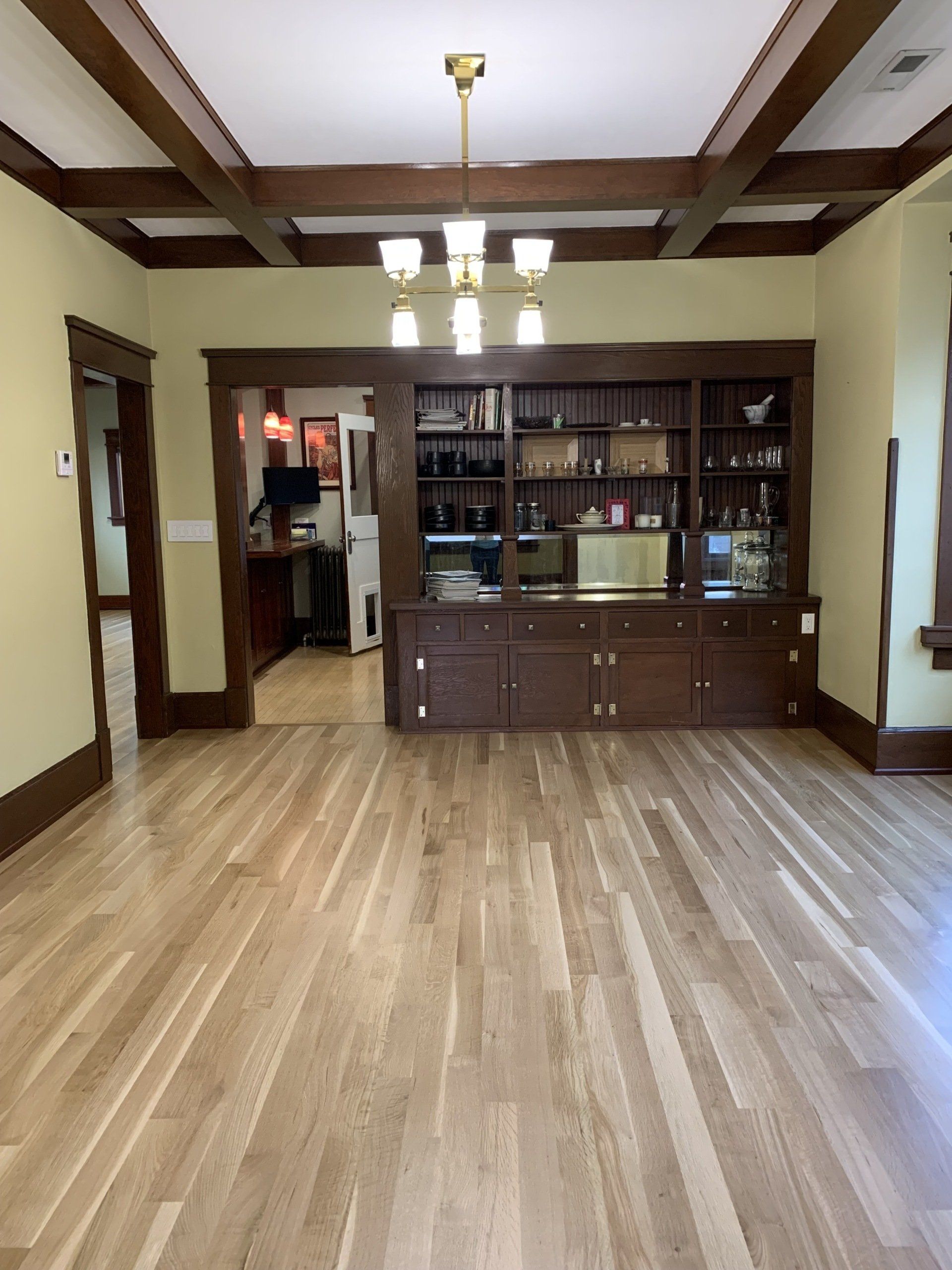
When homeowners buy an older house, oftentimes they do so because they like the "charm". The charm they are referring to are the original moldings or built-ins, but the "charm" they also get to live with are things like uneven subfloor - you know, the kind where the Christmas tree needs a major shim so it doesn't fall over?! We knew we had some subfloor issues to address in this older home in Sugarhouse, but when we stripped all of the old layers of flooring back to the original subfloor, what we found was the worst subfloor I have seen in the 16 years I have been doing hardwood floors. We know that houses settle over time, but we had 1 corner of subfloor that was over 2" below the bottom of the baseboards! Matt spent a week building up and leveling out the subfloor. Of course the rift and quarter sawn white oak floors turned out gorgeous, but I took it as an even better compliment when the homeowner said it was "strange walking on it without the movement". May your subfloors be flat and your Christmas trees stand straight - without assistance!

This year I have been trying to share the quirky things that come up on jobs, because almost every job has at least one unanticipated thing that requires a decision on how to handle the quirky item. At this home in Sandy, it was a surprise to find that the base plate under the spindles was not only not 3/4" thick, but it was a veneer. The staircase is really well built, so we anticipated butting the new 3/4" wood in the upstairs hall flush with the base plate and sanding everything to match. When we discovered that the base plate was thinner than our wood flooring and not able to be sanded, the homeowners and I literally sat on the floor and played around with flooring and nosing pieces to come up with a plan. We decided to bevel the edges of the wood flooring to ease the transition in height, and that the homeowner would paint the base plate white after we were finished with the floor. Jose did a great job executing the plan and the homeowners are happy with the outcome of the whole job, even if it does require a little more work on their end to get the base plate painted.
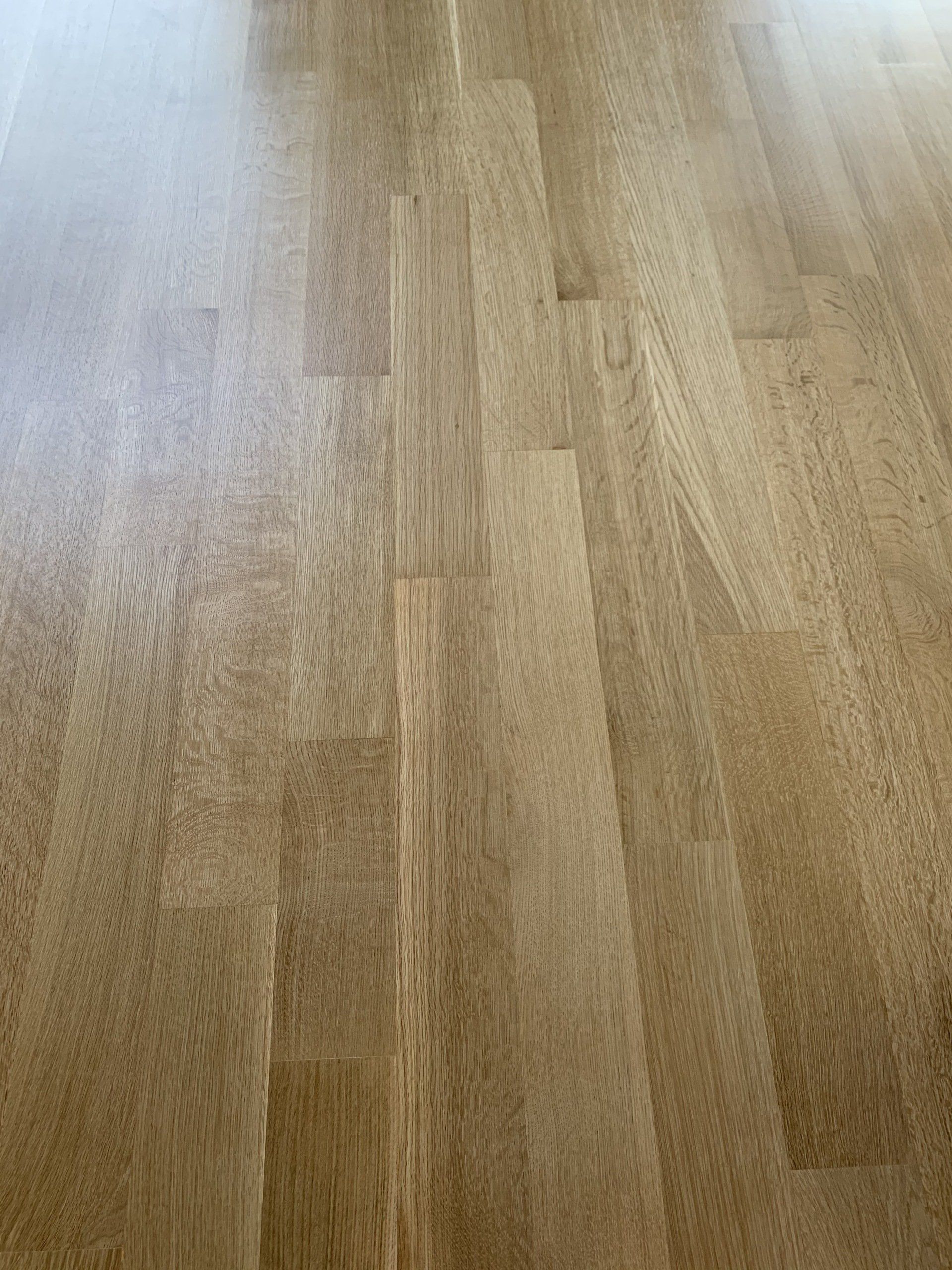
How to make all the different wood tones in our home look good together, including those we inherit with the home and those we bring in with our furniture, is a dilemma shared by many homeowners. This Park City homeowner's wood beams have taken on an orange tone, her brown baseboards have a slight green undertone in some areas from sun exposure, and she had her kitchen cabinets painted black several years ago. We decided that keeping the floor light and neutral, in color and grain pattern, would be best. She selected rift and quarter sawn white oak with a water-based sealer to keep the space bright without competing with the other wood tones. Beautiful home accomplished!
